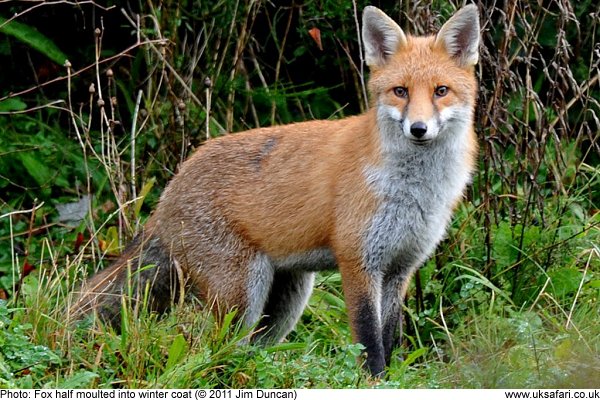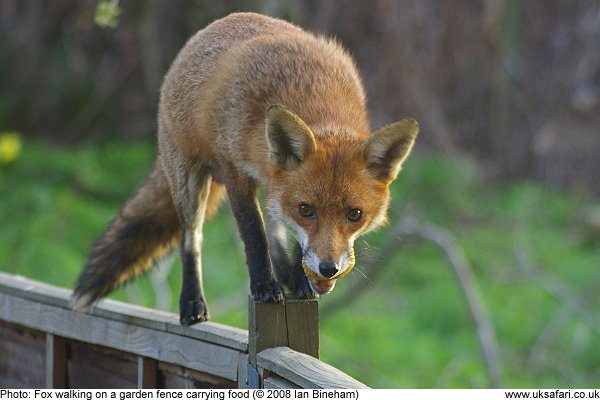 Quick Facts
Quick Facts
Scientific name: Vulpes vulpes
Size: An adult fox is about 70cm from head to tail, and the bushy tail or 'brush' is around 40cm long
Distribution: Found throughout the U.K.
Months seen: All year round
Life span: 2 to 3 years. In captivity more than 10 years
Habitat: Foxes are creatures of open countryside, but more frequently they are found in urban areas
Food: Mostly rats, mice, voles, rabbits and insects. In towns and cities they scavenge household scraps from gardens and dustbins
Special features: Red Foxes have existed in the UK since the last ice age. They are mainly nocturnal, but you can sometimes see them during daylight hours. Red foxes sleep in underground dens. The dens appear similar to badger setts but you can tell when foxes are resident by the strong musky odour at the entrance hole.
In the winter the fur coat of the fox becomes thicker, and a richer red-brown colour to help insulate them from the cold weather.
Mating occurs in late December, and this is the time of year when foxes are at their noisiest. After dusk the males (dogs) emit a short loud bark, and the females (vixens) answer with an eerie scream which sounds frighteningly human.
The cubs, between three and six, are born in an underground den around the middle of March. By the end of May or early June they start to make exploratory trips above ground with their mother as she goes hunting for food.
If you find a pile of chewed or broken feathers on the ground this may well be where a fox has caught and killed a bird. The feathers will be chewed cleanly in half. If the feathers are not broken or chewed it's likely the kill was made by a bird of prey such as a sparrowhawk.
If you see a fox out in the daytime it doesn't necessarily mean it is sick. Foxes frequently hunt for food in daylight, especially when they have a litter of cubs to feed. However, if you see a fox with bald patches and gluey eyes, it is likely suffering from sarcoptic mange which can be treated. You can call the RSPCA or contact your local wildlife rescue centre who may be able to help.
 Related Pages
Related Pages
- More Red Fox Photographs
- Hear the sound of foxes calling
- Foxes and Domestic Pets
- UK Safari Mammals section
- Free Newsletter

 Popular Pages
Popular Pages
Amphibians, Bats, Badgers, Beetles, Birds, Birds of Prey, Bumble Bees, Butterflies, Caterpillars, Creepy-Crawlies, Deadly Spiders, Dolphins, Dragonflies, E-Postcards, False Widow Spiders, Free Newsletter, Frogs, Fungi, Garden Spiders, Glow-Worms, Grey Squirrels, Hedgehogs, House Spiders, Ladybirds, Mammals, Marine Mammals, Moths, Owls, Reptiles, Spiders, Toads, Trees, Wildlife Hospitals
Copyright © 2020 G. Bradley UK Safari. All rights reserved | About Us | Links | Contributors


 Foxes
Foxes





